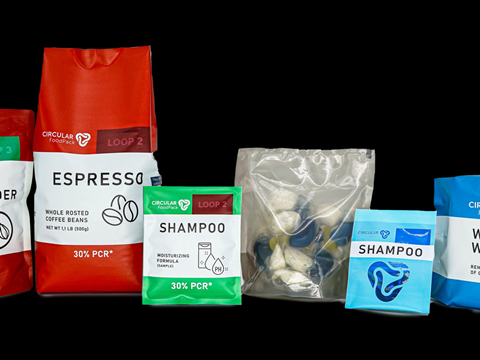
The EU-funded CIRCULAR FoodPack project has successfully recycled flexible plastic multilayer composites (MLCs) into food-grade polyethylene packaging using tracer-based sorting technology, water-based treatment, and solvent-based recycling.
Although MLCs have traditionally been used to package food and personal care products in line with stringent safety and hygiene requirements, it was previously considered impossible to separate the layers; thus, such packaging is difficult to recycle, and instead incinerated or sent to landfill at end-of-life.
Furthermore, recycled materials from non-food packaging cannot be used to manufacture new food packaging under EU law; and no pre-existing sorting systems have been capable of recognizing food from non-food packaging in a mixed-waste stream.
Nor have any recycling processes been able to remove impurities from plastic MLCs or deinking or deodorizing materials, the researchers believe.
In response, the Fraunhofer Institute for Process Engineering and Packaging IVV coordinated the project over three and a half years of research, with fifteen companies and research institutes participating. The European Union provided around €5.4 million via the Horizon 2020 framework programme in pursuit of novel solutions for recycling complex laminated plastic packaging for flexible food packaging applications.
Under CIRCULAR FoodPack’s new system, fluorescent tracers are printed onto a pack during production to distinguish between food and non-food packaging. The tracer-based sorting technology can then use a laser to recognize near-infrared emissions in a mixed-waste stream and sort it accordingly.
These tracers are incorporated into the printing inks and are removed during the washing and deinking phase of the recycling process.
Apparently, this optical system can be ‘easily and economically’ retrofitted into existing sorting plants, with large-scale tests reporting a 99% levelized sorting purity among food packaging items.
The sorted food packaging waste can then undergo pre-treatment in a water-based delamination and deinking process; this claims to separate the plastic multilayer composites, including primers for functional coatings, and remove 95% of printing inks. Similarly, infrared deodorizing technology is set to clear the recyclate of volatile substances and reduce granulate odour by 95%.
A solvent-based recycling process separates additives, inks, and odours from the polyethylene, producing recyclate that meets the necessary quality requirements to be processed into new flexible packaging. The material is suitable for use in home and personal care packaging – but, when combined with newly developed ‘functional migration barriers’ to separate the recyclate from the food-contact layers, this technology is anticipated for use in new food packaging.
The final film claims to contain up to 50% post-consumer recycled polyethylene. As a result of testing from the project’s early phases, the final packaging takes a ‘double barrier’ approach, sandwiching the post-consumer recyclate layer between to increase consumer safety and prevent set-off migration.
Practical trials have apparently revealed the film’s machinability in the production of flow wrap bags, bottom-gusseted bags, stand-up pouches, and sachets. Feasibility studies have also suggested that rPE produced with CIRCULAR FoodPack technologies would come at a competitive price to virgin PE.
Now the project partners push for ‘clear and effective communication’ about the packaging’s environmental benefits to tap into increasing consumer demand for sustainability-minded solutions, especially recycled materials.
“Our innovative, effective sorting and recycling process for post-consumer food packaging waste provides high-quality and pure recycled polyethylene suitable for use in newly designed packaging for sensitive contents,” explains project coordinator Dr. Esra Kücükpinar from Fraunhofer IVV. “We have demonstrated the economic and environmental viability and assessed the social sustainability of flexible food packaging recycling.
“With these technological innovations, we want to drive forward the circular economy in Europe, strengthen the recycling industry and contribute to the PPWR objectives. Investments and further research, however, are needed to implement CIRCULAR FoodPack technologies in the industrial circular value chain and to further monitor and improve integration of PE PCR in food packaging.”
The development comes as Berry Global’s European Flexibles division reports that its use of post-consumer recycled polyethylene has increased by 36% year-on-year across its industrial, agricultural, and non-contact sensitive films. It claims to have reported an additional 4,386 tonnes of PCR content into its form-fill-seal and heavy duty sacks, among other flexible film products.
LyondellBasell has its own sights set on embracing solvent-based recycling technology, this time for LDPE, by acquiring APK AG. In doing so, it plans to boost recycling rates for hard-to-recycle flexible plastic waste.
Ravi Sharma, vice president of Research and Development at Digimarc, also spoke to Packaging Europe about the potential of advanced sortation technologies like digital watermarking to sort flexible plastics, including plastic film and crisp packets. He points to ongoing trials from the HolyGrail 2.0 initiative to improve sorting and recycling rates for packaging.
If you liked this story, you might also enjoy:
The ultimate guide to the Packaging and Packaging Waste Regulation in 2024
How are the top brands progressing on packaging sustainability?
Sustainable Innovation Report 2024: Current trends and future priorities
Everything you need to know about global plastic sustainability regulation

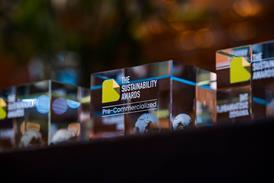
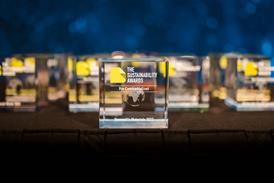
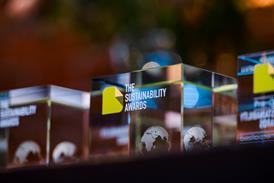
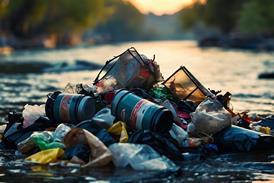
















No comments yet